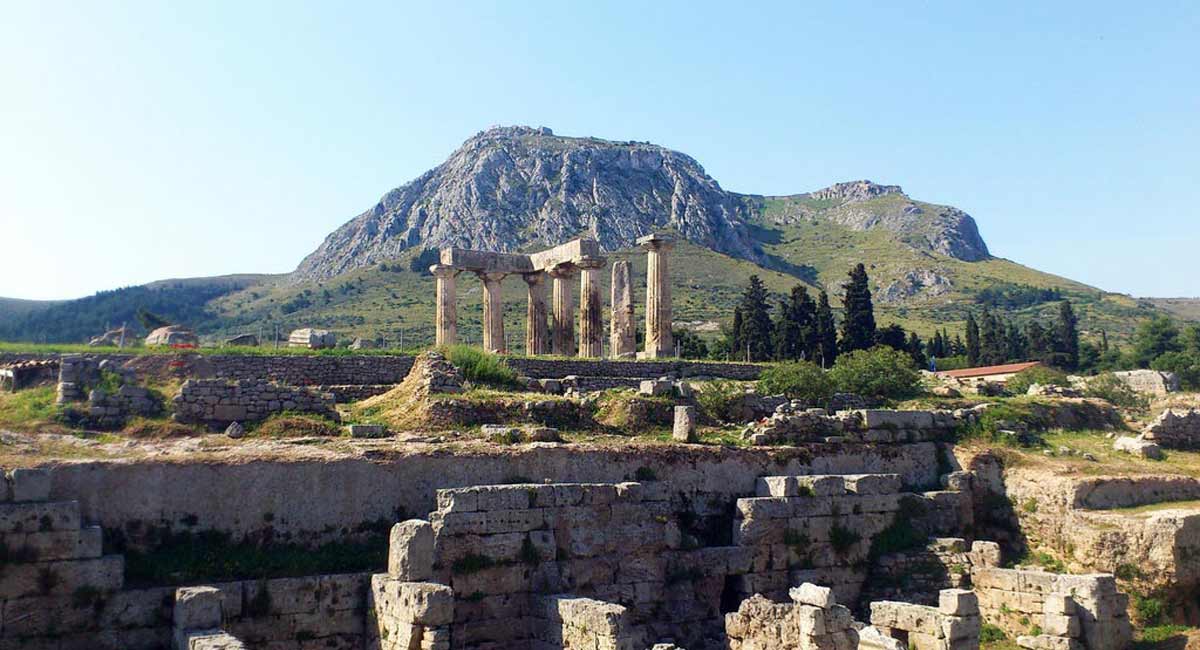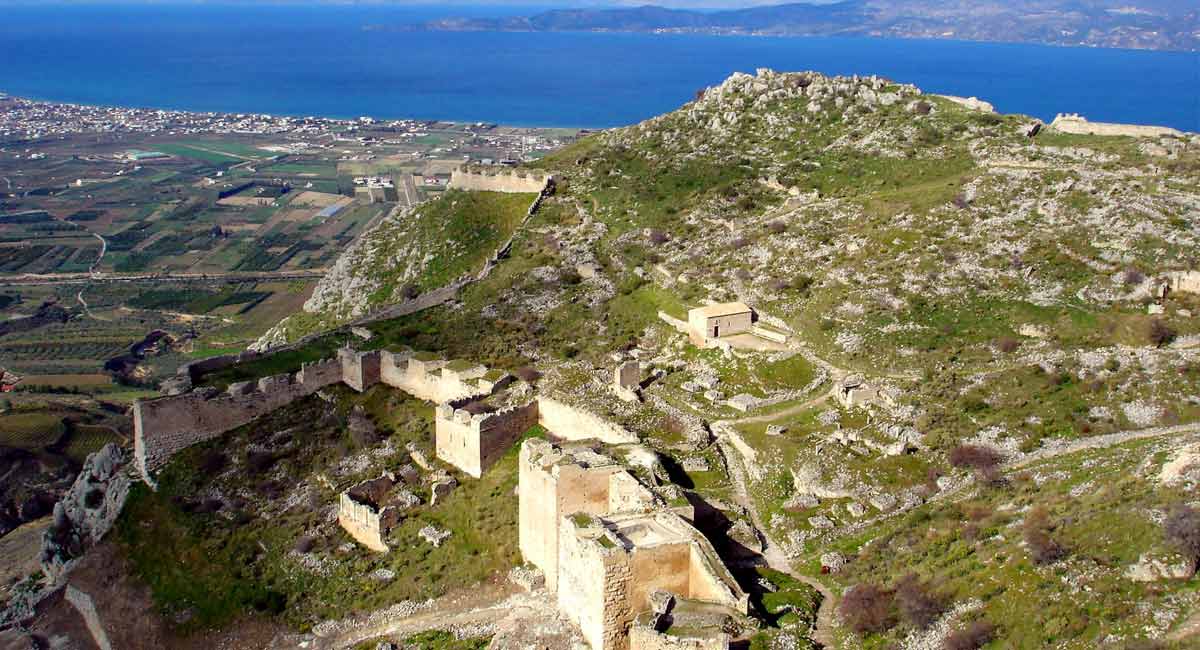KORINTHOS
Korinthos is a city and former municipality in Corinthia, Peloponnese, Greece. Since the 2011 local government reform it is part of the municipality of Corinth, of which it is the seat and a municipal unit. It is the capital of Corinthia.
It was founded as Nea Korinthos or New Corinth (ΝέαΚόρινθος) in 1858 after an earthquake destroyed the existing settlement of Corinth, which had developed in and around the site of ancient Corinth. Located about 78 kilometres (48 mi) west of Athens, Corinth is surrounded by the coastal townlets of (clockwise) Lechaio, Isthmia, Kechries, and the inland townlets of Examilia and the archaeological site and village of ancient Corinth.
Natural features around the city include the narrow coastal plain of Vocha, the Corinthian Gulf, the Isthmus of Corinth cut by its canal, the Saronic Gulf, the Oneia Mountains, and the monolithic rock of Acrocorinth, where the medieval acropolis was built. Corinth derives its name from Ancient Corinth, a city-state of antiquity. In 1858, the old city, now known as Archaia Korinthos (ΑρχαίαΚόρινθος), located 3 kilometres (1.9 miles) SW of the modern city, was totally destroyed by a magnitude 6.5 earthquake.

Nea Korinthos or New Corinth was then built a few kilometers away on the coast of the Gulf of Corinth. A magnitude 6.3 earthquake in 1928 devastated the new city, which was then rebuilt on the same site. It was rebuilt again after a great fire in 1933.The Corinth Canal, carrying ship traffic between the western Mediterranean Sea and the Aegean Sea, is about 4 kilometres (2.5 mi) east of the city, cutting through the Isthmus of Corinth that connects the Peloponnesian peninsula to the Greek mainland, thus effectively making the former an island.
The builders dug the canal through the Isthmus at sea level; no locks are employed. It is 6.4 kilometres (4.0 mi) in length and only 21.3 metres (70 ft) wide at its base, making it impassable for most modern ships. It now has little economic importance.
The canal was mooted in classical times and an abortive effort was made to build it in the 1st century AD. Construction finally got underway in 1881 but was hampered by geological and financial problems that bankrupted the original builders. It was completed in 1893, but due to the canal's narrowness, navigational problems and periodic closures to repair landslips from its steep walls, it failed to attract the level of traffic anticipated by its operators. It is now used mainly for tourist traffic.

Korinthos is a city and former municipality in Corinthia, Peloponnese, Greece. Since the 2011 local government reform it is part of the municipality of Corinth, of which it is the seat and a municipal unit. It is the capital of Corinthia.
It was founded as Nea Korinthos or New Corinth (ΝέαΚόρινθος) in 1858 after an earthquake destroyed the existing settlement of Corinth, which had developed in and around the site of ancient Corinth. Located about 78 kilometres (48 mi) west of Athens, Corinth is surrounded by the coastal townlets of (clockwise) Lechaio, Isthmia, Kechries, and the inland townlets of Examilia and the archaeological site and village of ancient Corinth.
Natural features around the city include the narrow coastal plain of Vocha, the Corinthian Gulf, the Isthmus of Corinth cut by its canal, the Saronic Gulf, the Oneia Mountains, and the monolithic rock of Acrocorinth, where the medieval acropolis was built. Corinth derives its name from Ancient Corinth, a city-state of antiquity. In 1858, the old city, now known as Archaia Korinthos (ΑρχαίαΚόρινθος), located 3 kilometres (1.9 miles) SW of the modern city, was totally destroyed by a magnitude 6.5 earthquake.

Nea Korinthos or New Corinth was then built a few kilometers away on the coast of the Gulf of Corinth. A magnitude 6.3 earthquake in 1928 devastated the new city, which was then rebuilt on the same site. It was rebuilt again after a great fire in 1933.The Corinth Canal, carrying ship traffic between the western Mediterranean Sea and the Aegean Sea, is about 4 kilometres (2.5 mi) east of the city, cutting through the Isthmus of Corinth that connects the Peloponnesian peninsula to the Greek mainland, thus effectively making the former an island.
The builders dug the canal through the Isthmus at sea level; no locks are employed. It is 6.4 kilometres (4.0 mi) in length and only 21.3 metres (70 ft) wide at its base, making it impassable for most modern ships. It now has little economic importance.
The canal was mooted in classical times and an abortive effort was made to build it in the 1st century AD. Construction finally got underway in 1881 but was hampered by geological and financial problems that bankrupted the original builders. It was completed in 1893, but due to the canal's narrowness, navigational problems and periodic closures to repair landslips from its steep walls, it failed to attract the level of traffic anticipated by its operators. It is now used mainly for tourist traffic.

Elements
- Luxury Travel Service
- Theodoros Papandreou
- Laodikias 123 Nikaia Postcode 18451
- Privacy Policy
Menu

Number ΕΟΤ: 0207E8000055031
Copyright 2016 - 2019 © All rights Reserved. Designed by nextlevelweb.gr
